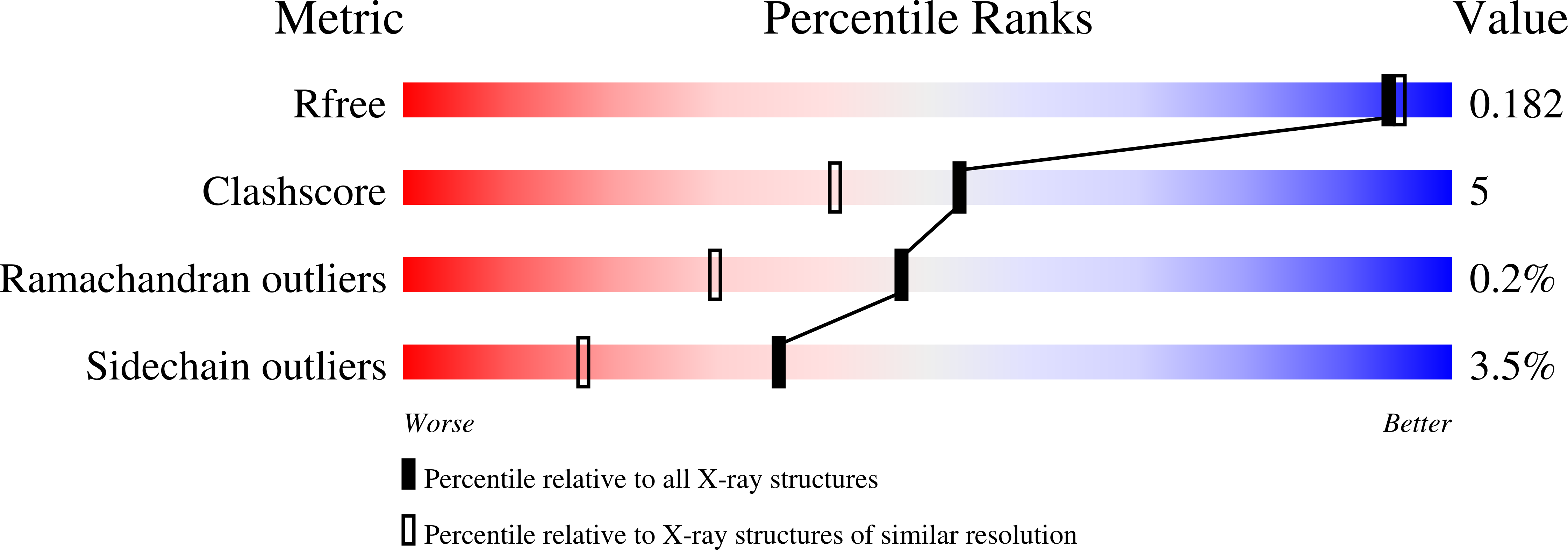Structural rationale for low-nanomolar binding of transition state mimics to a family GH3 beta-D-glucan glucohydrolase from barley.
Hrmova, M., Streltsov, V.A., Smith, B.J., Vasella, A., Varghese, J.N., Fincher, G.B.(2005) Biochemistry 44: 16529-16539
- PubMed: 16342944
- DOI: https://doi.org/10.1021/bi0514818
- Primary Citation of Related Structures:
1X38, 1X39 - PubMed Abstract:
The interactions of a transition state mimic anilinomethyl glucoimidazole (AmGlcIm), with a K(i) constant of 0.6 x 10(-)(9) M and a Gibbs free energy value of -53.5 kJ/mol, with a family GH3 beta-d-glucan glucohydrolase from barley have been analyzed crystallographically and by ab initio quantum mechanical modeling. AmGlcIm binds 3 times more tightly to the beta-d-glucan glucohydrolase than a previously investigated phenyl glucoimidazole. In the enzyme-AmGlcIm complex, an additional residue, Tyr253, and a water molecule positioned between subsites -1 and +1 are recruited for binding. Analyses of the two binary complexes reveal the following. (i) An intricate network exists in which hydrogen bonds between the enzyme's catalytic pocket residues Lys206, His207, Tyr253, Asp285, and Glu491 and the glucoimidazoles are shorter by 0.15-0.53 A, compared with distances of hydrogen bonds in the Michaelis complex. (ii) The "glucose" moiety of the glucoimidazoles adopts a (4)E conformation that is vital for the low-nanomolar binding. (iii) The N1 atoms of the glucoimidazoles are positioned nearly optimally for in-line protonation by the Oepsilon1 atom of the catalytic acid/base Glu491. (iv) The enzyme derives binding energies from both glycone and aglycone components of the glucoimidazoles. (iv) The prevalent libration motion of the two domains of the enzyme could play a significant role during induced fit closure in the active site. (v) Modeling based on the structural data predicts that protons could be positioned on the N1 atoms of the glucoimidazoles, and the catalytic acid/base Glu491 could carry an overall negative charge. (vi) The enzyme-AmGlcIm complex reveals the likely structure of an early transition state during hydrolysis. Finally, the high-resolution structures enabled us to define minimal structures of oligosaccharides attached to Asn221, Asn498, and Asn600 N-glycosylation sites.
Organizational Affiliation:
School of Agriculture and Wine and Australian Centre for Plant Functional Genomics, University of Adelaide, Waite Campus, Glen Osmond, SA 5064, Australia. maria.hrmova@adelaide.edu.au




















